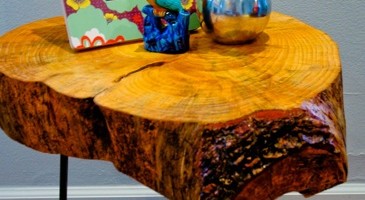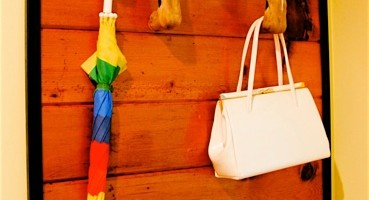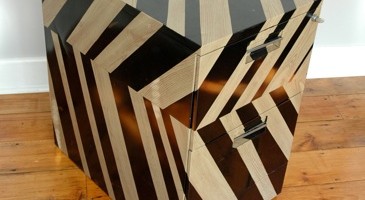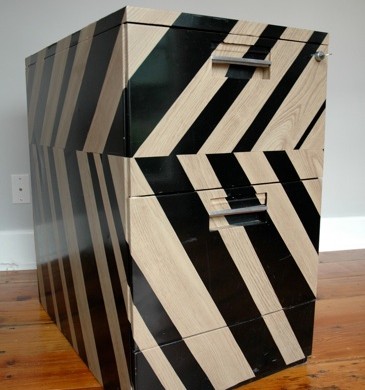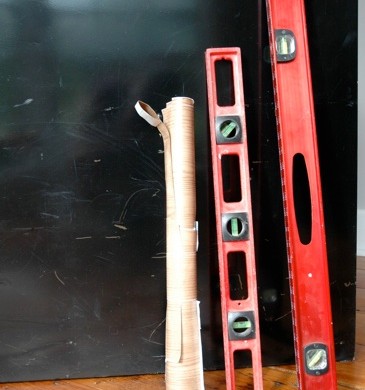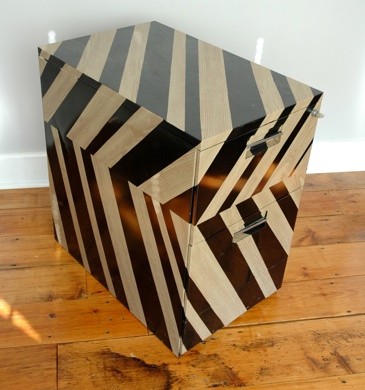Pretty Paper Christmas Trees
I explained in “Christmas No-No Decor” why I had to switch it up this year due to my naughty kittens. We are in the throes of training them…they are just a little hard-headed.
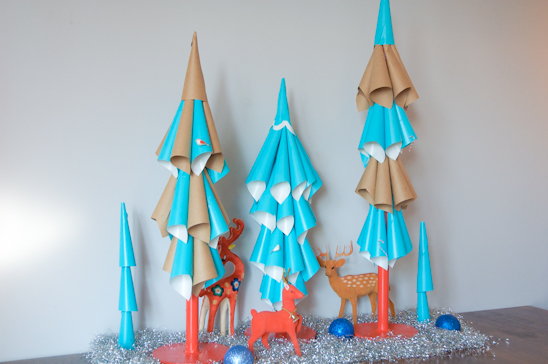
I was excited to try something new and this vision of blue and red came to mind. I went with it.

Apparently, the motivation from naughty cat-dom was just the challenge I needed. Without spending a dime and using things that I had on hand, I created a whole new fancy look for my mantel this year.
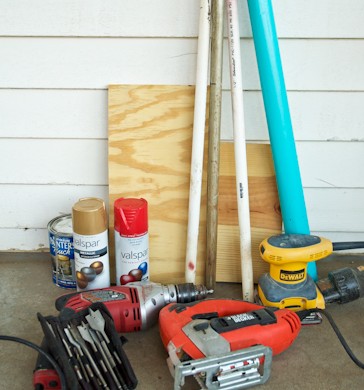
Here’s what you’ll need to make your very own Pretty Paper Christmas Trees:
3/4″ Dowel Rods or PVC pipe
3/4″ Scrap Plywood
Coffee can lid
Jigsaw
Palm Sander & Fine/Medium Sand Paper
Drill and paddle drill bits
Oops Paint or Spray Paint
Hot glue gun & glue sticks (not pictured because they were warming up for their duties)
Wrapping Paper (I used both robin egg blue and brown parchment)
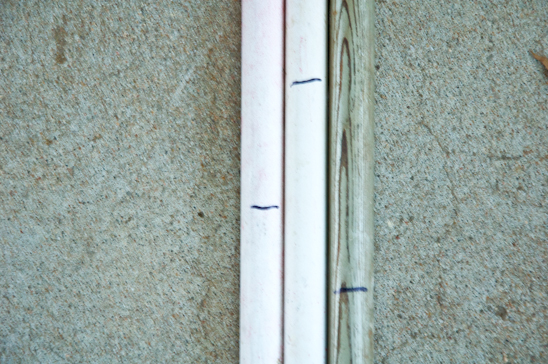
I had two pieces of leftover 3/4″ PVC and a 3/4″ Broom stick that someone had gone ninja on. I used all three pieces to make my three trees.
Mark the desired height of trees onto the PVC or dowel rod with a sharpee. I cut my lengths to 18″, 24″ and 32″.
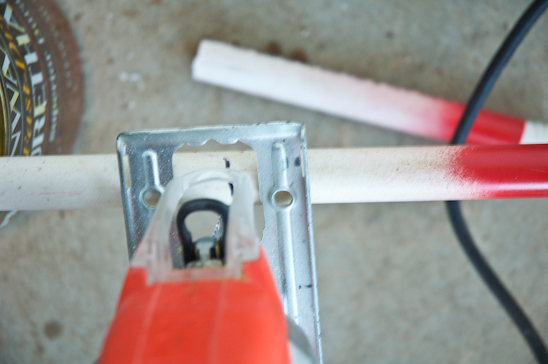
Using the jig saw and a wood blade, cut the PVC or dowel rods at the marked lines.
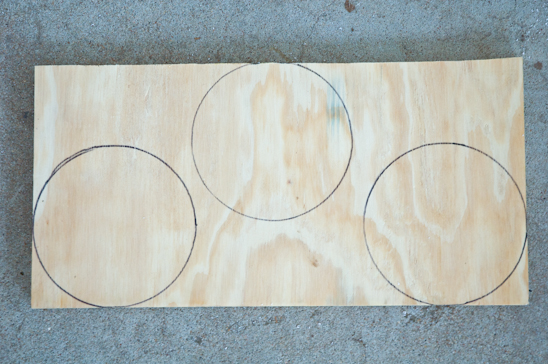
Outline the coffee can lid onto the scrap plywood. This will be the base of the trees.
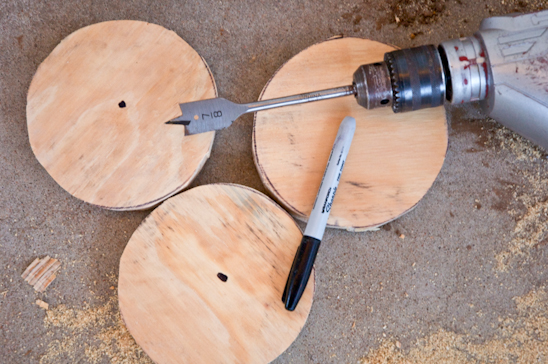
This joke never gets old, “Cut it out.” (Courtesy Uncle Joey.)
Meaning, cut the plywood circles out with the jig saw.
Using a 7/8″ paddle drill bit attached to the drill, drill into the center of the plywood, without going all the way through.
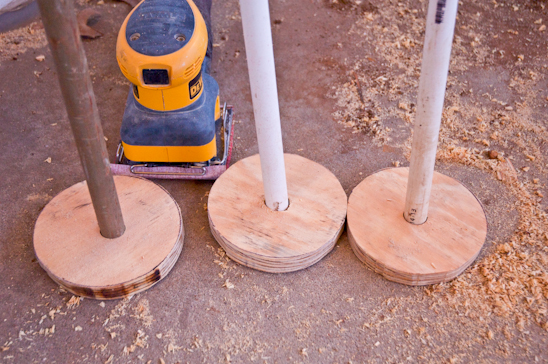
Sand the pieces of plywood using the palm sander. Sand the PVC and dowel rods by hand with a loose piece of sand paper.
Make sure the PVC or dowel rods fit into the holes in the plywood.
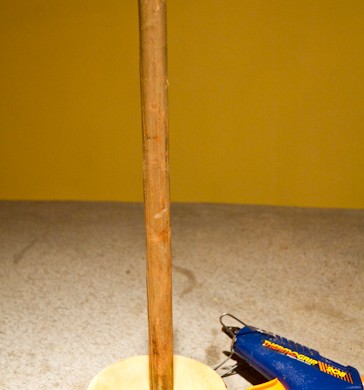
Hot glue the PVC or dowel rods to the plywood. Make sure you burn at least two of your fingers in this process.
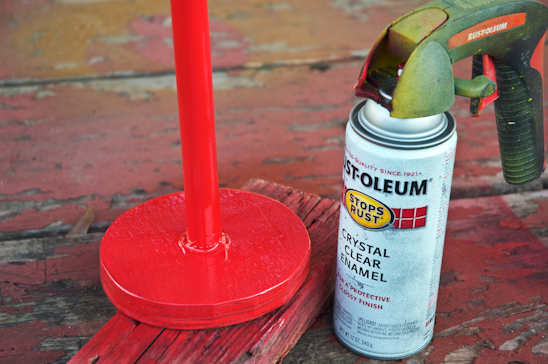
Spray the entire thing with two coats of your favorite paint. Let dry.

While the tree stands are drying, cut out 3″ square pieces from the wrapping paper.

Roll each square into a cone shape that resembles this one. Hot glue the very end to the cone.

Pour a glass of wine and then do that same thing about 20 times more for each tree-depending upon the height.
Some of my trees required about 20 cones, the tallest about 30.
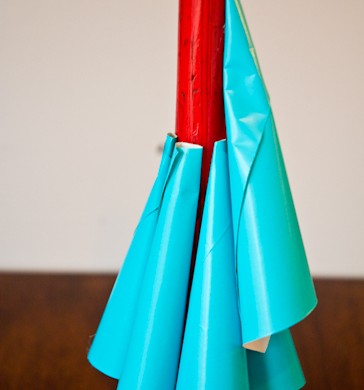
Starting about 6″ away from the base of the tree, begin hot glueing the desired colored cones to the PVC or dowel rod. Move up about 3-4″ and add another round of cones. Continue doing this until you reach the top of the tree.
I made one tree that was all blue, one with rows of alternating blue and brown parchment paper, and one that alternated within the same row blue, brown, blue, brown, etc.

I insist you make a mess while doing this, just so I don’t feel bad.
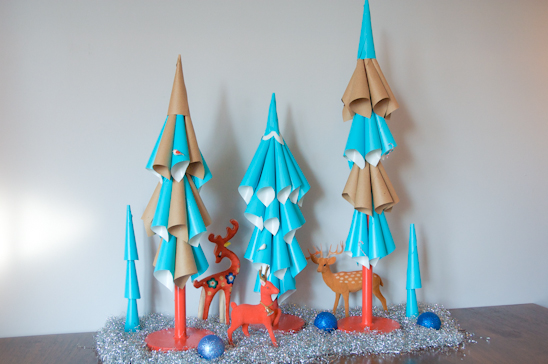
Add one last cone to the top of the tree, covering up any of the remaining PVC or dowel rod. Add a few cute birds, candy canes or alternating colors.

Fancy it up with some cute deer, sparkly tinsel and leftover ornaments and call your mantel decorated!
Merry Christmas!

